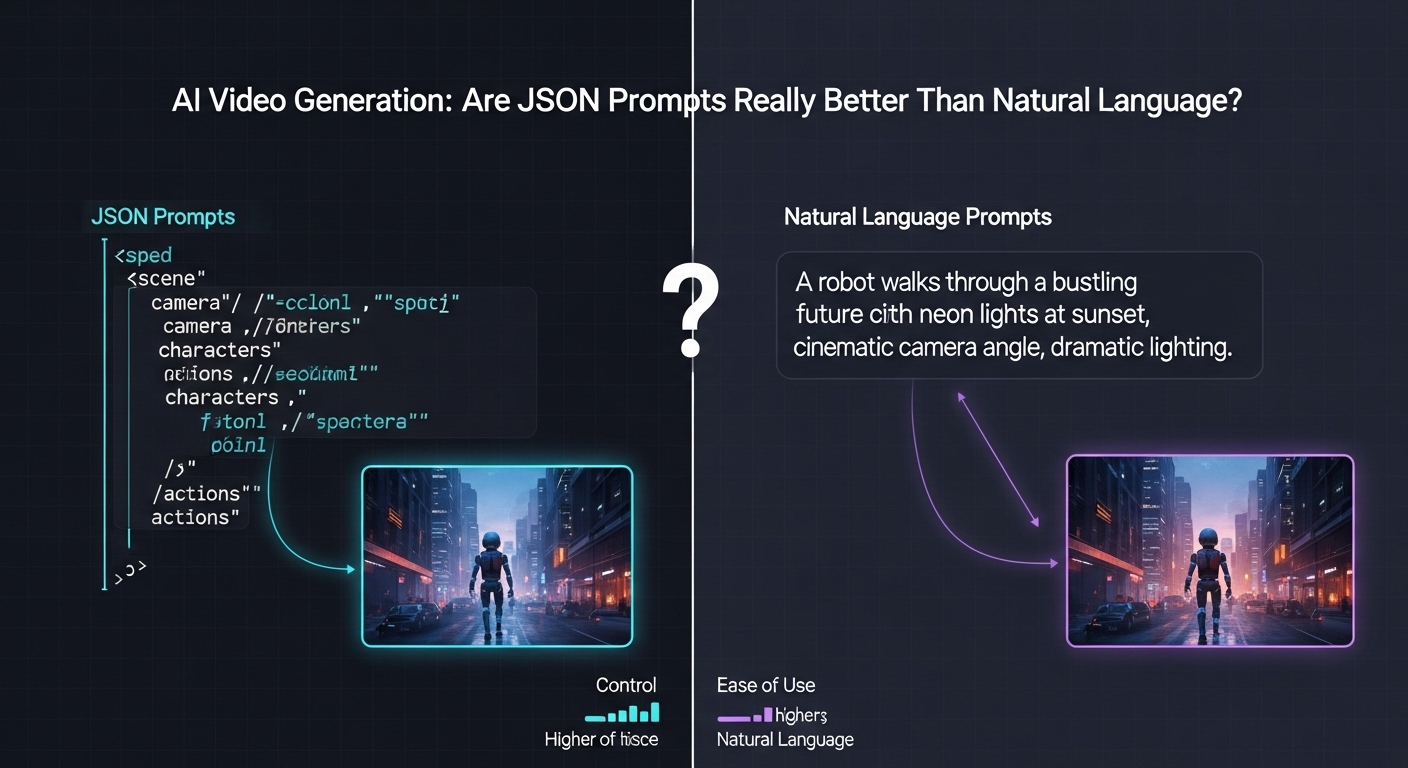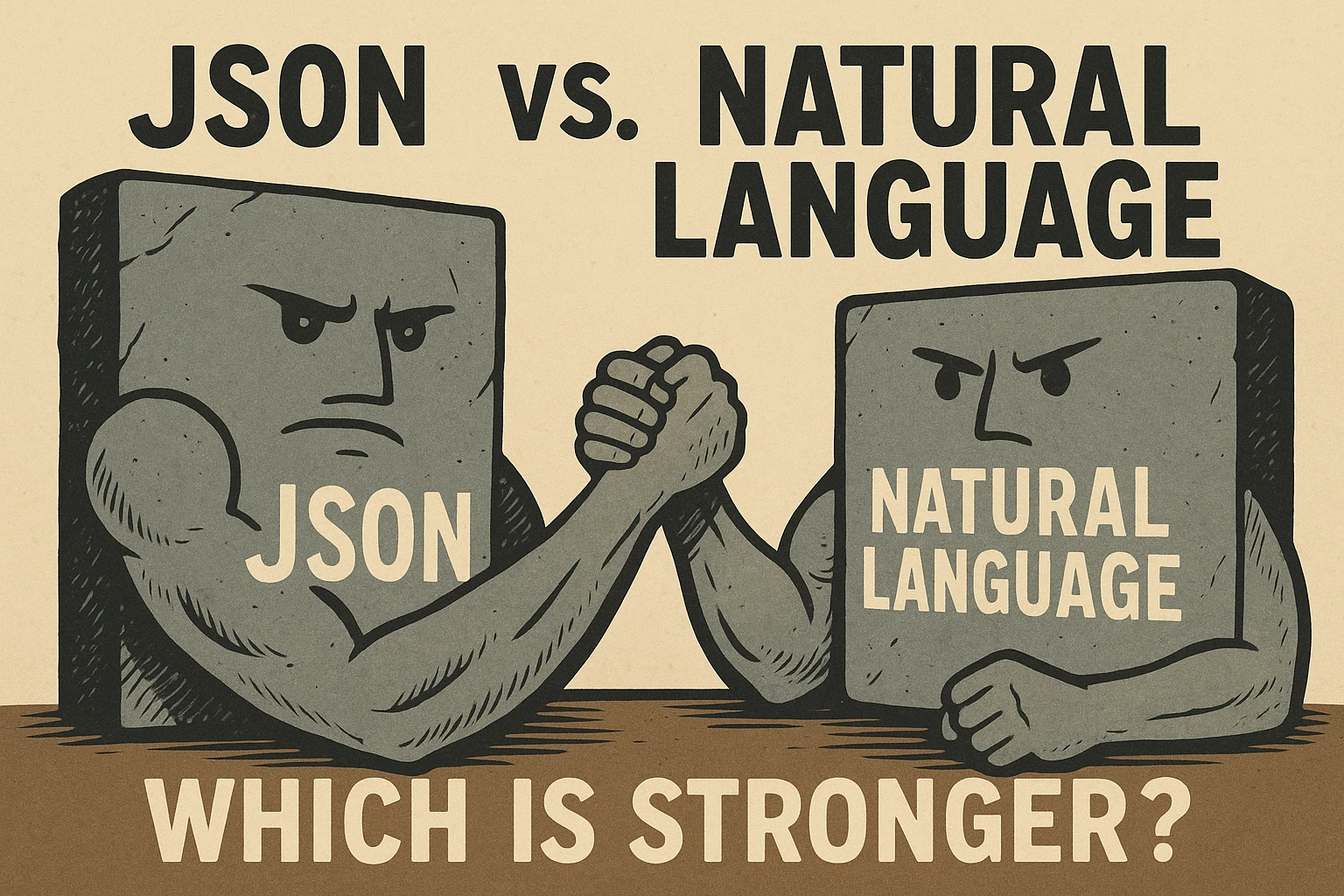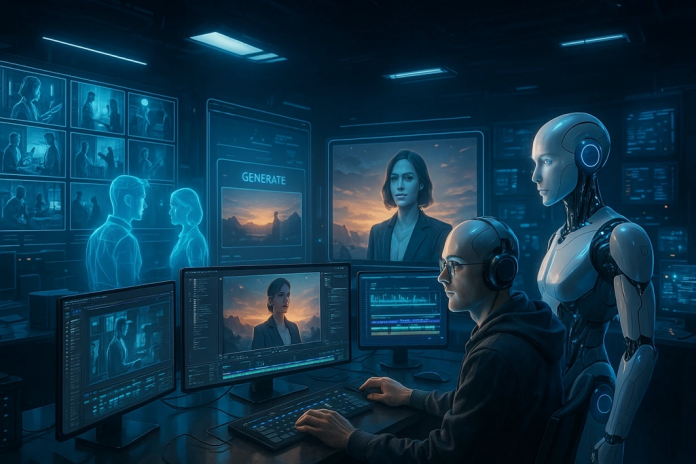AI Video Generation: Are JSON Prompts Really Better Than Natural Language?

With the recent buzz around Google Veo 3, many users have turned to writing prompts in JSON format. Some claim that this "structured" approach yields better video outputs than traditional natural language prompts, sparking significant debate. So, what is JSON, and is it truly superior?
What Is JSON?
JSON (JavaScript Object Notation) is a lightweight data interchange format using key-value pairs, such as:
{ "scene": "Neo-Tokyo 2077, neon-lit skyscrapers with holographic billboards, flying cars zipping through rain-slicked streets. A cybernetic detective chases a rogue AI through an abandoned data hub.", "style": "Cyberpunk 2077 meets Blade Runner, high-contrast neon lighting, gritty textures, glitch effects", "length": "45 seconds", "resolution": "4K", "camera": { "shots": [ {"type": "dolly", "direction": "forward", "duration": "8s", "focus": "detective's cybernetic eye"}, {"type": "360_spin", "speed": "fast", "duration": "6s", "focus": "rogue AI's glowing core"}, {"type": "split_screen", "layout": "left-right", "duration": "10s", "content": ["detective's HUD", "AI's data trail"]} ] }, "special_effects": { "glitch": { "intensity": "0.7", "frequency": "high", "color": "#FF00FF" }, "neon_glow": { "radius": "20px", "blend_mode": "screen" } }, "sound": { "background_music": "industrial techno with heavy bass drops", "ambient_sound": "rain pattering, hologram hums, distant sirens", "voice_over": "A world where humans and code blur. Find the truth before it deletes you." } }
{ "scene": "A medieval castle under siege, with fireballs and arrows flying. The camera moves through the battlefield, allowing viewers to interact with objects.", "style": "Unreal Engine 5 realism, dynamic lighting, particle-rich combat. Inspired by The Witcher 3 and Game of Thrones.", "length": "90 seconds", "resolution": "8K", "camera": { "shots": [ {"type": "first-person", "movement": "free", "duration": "30s"}, {"type": "third-person", "distance": "10m", "angle": "45°", "duration": "30s"}, {"type": "vr_360", "interactivity": ["pick-up sword", "block arrow"], "duration": "30s"} ] }, "special_effects": { "physics_engine": { "gravity": "0.8", "collision": "true", "ragdoll": "soldiers" }, "weather_system": { "type": "thunderstorm", "wind_speed": "20m/s", "rain_intensity": "high" } }, "sound": { "background_music": "epic orchestral battle theme", "ambient_sound": "sword clashes, war cries, thunder rumbles", "interactive_sound": { "pick-up": "metal clang", "block": "shield impact" } } }
{ "brand": "Chronos Elite", "core_message": "Time is an art---crafted, precise, timeless", "style": "Hugo Boss meets A24 cinematography: warm golden hour lighting, ultra-smooth tracking shots, 120fps slow motion for detail", "total_length": "60 seconds", "resolution": "8K HDR", "aspect_ratio": "2.39:1 (cinematic widescreen)", "color_grading": { "primary_tone": "deep navy + gold accents", "contrast": "high", "saturation": "muted (70%)" }, "scenes": [ { "scene_id": "01_craftsmanship", "duration": "15s", "content": "Master watchmaker's hands assembling a chronograph movement---close-ups of gears, sapphire crystal, and 18k gold case", "camera": { "shots": [ {"type": "macro", "focus": "tweezers placing a micro-gear", "duration": "5s"}, {"type": "tracking", "direction": "left-to-right", "subject": "watch face engraving", "speed": "ultra-slow"} ] }, "brand_elements": ["logo embossed on case back", "signature blue dial"], "sound": { "ambient": "soft ticking (amplified 300%)", "music": "cello solo (slow, melodic)" } }, { "scene_id": "02_lifestyle", "duration": "20s", "content": "Business executive in tailored suit checking the watch during a sunset meeting on a rooftop---city skyline in background", "camera": { "shots": [ {"type": "over-shoulder", "focus": "watch on wrist as hand gestures", "duration": "8s"}, {"type": "wide_angle", "zoom": "out", "focus": "executive with watch catching golden light"} ] }, "brand_elements": ["watch strap matching suit texture", "date window reflecting sunset"], "sound": { "ambient": "distant city buzz", "music": "piano + violin (building to crescendo)" } }, { "scene_id": "03_legacy", "duration": "15s", "content": "Vintage Chronos Elite watch from 1960s placed next to 2024 model---both glowing under museum-like lighting", "camera": { "shots": [ {"type": "top-down", "rotate": "360°", "speed": "slow", "focus": "side-by-side watches"}, {"type": "close-up", "zoom": "in", "focus": "matching serial number engraving"} ] }, "brand_elements": ["heritage logo (1960s) vs modern logo", "tagline: 'Timeless since 1948'"], "sound": { "ambient": "silence (emphasizing legacy)", "music": "orchestral swells (emotional peak)" } }, { "scene_id": "04_call_to_action", "duration": "10s", "content": "Watch displayed in luxury boutique window---text overlay: 'Craft Your Legacy'", "camera": { "shots": [ {"type": "dolly", "direction": "forward", "focus": "watch in window", "end_on": "logo animation"} ] }, "brand_elements": ["full logo on screen", "website URL: www.chronoselite.com"], "sound": { "voice_over": "Chronos Elite: Where time becomes art.", "music": "fade to soft piano chord" } } ], "api_integration": { "dynamic_fields": ["[current_year]", "[limited_edition_name]"], "output_format": "MP4 + XML project file (for post-editing)" } }
JSON vs. Natural Language: Which Is Stronger?

AI models don't inherently "prefer" one format over another. Whether you input natural language or JSON, the model converts it into tokens and processes it similarly. If your prompt is clear and logically organized, natural language can be just as effective.
However, JSON does shine in certain specific scenarios:
Advantages of JSON:
- Greater control: You can explicitly define scene, style, duration, etc., reducing undesired "freestyling" by the AI.
- Ideal for complex tasks: Multi-scene scripts or product specification videos benefit from a structured format.
- Effortless batch and template reuse: Use one JSON template to generate multiple variations very efficiently.
- Seamless integration: Developers can generate and parse JSON prompts programmatically, making it perfect for automated workflows.
Drawbacks of JSON:
- Steeper learning curve: Many users aren't familiar with JSON syntax and may find it intimidating.
- Limits creativity: Its rigidity can stifle the AI's imaginative capabilities.
- Cumbersome to edit: Adjusting a JSON prompt takes more effort and is prone to syntax errors, compared to simply tweaking a natural language sentence.

Prompt: futuristic AI video studio, holograms, virtual actors, human + AI editing, storyboards, cinematic lighting, 4K detail.
When to Use JSON vs. Natural Language
- Use JSON if you're dealing with complex, multi-step tasks---branded videos, scene-by-scene scripting, or need API-driven workflows.
- Stick with natural language for creative, expressive, or conversational scenarios---illustration prompts, storytelling, or dialogue-driven outputs like ChatGPT.
Final Takeaway
JSON is not a magical upgrade---it's just a clear way to structure your prompt. It's perfect when you need consistency, content control, or automation. But for creatives seeking flexibility and spontaneity, well-crafted natural language is often more powerful.
The real key isn't format---it's clarity. Whether you use JSON or plain language, the most important thing is to clearly express your ideas. Format is just the tool; your creativity and structured thinking are what truly matter.